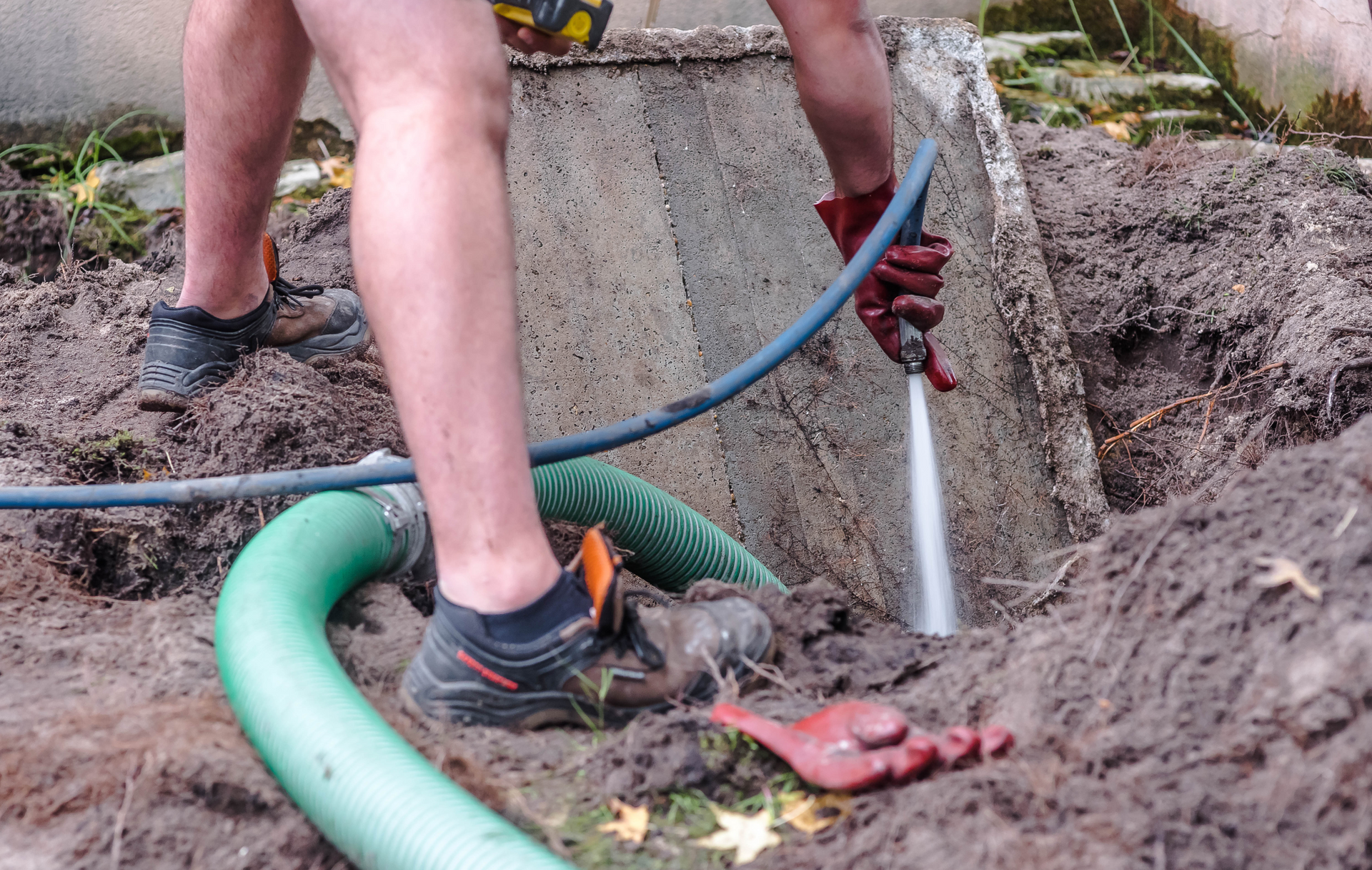Septic Tank Upgrades: Sustainability in Oxford | Oxford Septic
April 17, 2024
Septic Tank Upgrades: Enhancing Environmental Sustainability in Oxford, MS
In the quest for a more sustainable future, even the smallest changes can have a significant impact. When it comes to septic systems, upgrading to environmentally friendly options can be a game-changer. In this comprehensive guide, we'll explore septic tank upgrades and how they contribute to enhancing environmental sustainability in Oxford, MS.
The Green Revolution: Why Upgrade Your Septic Tank?
1. Efficient Water Usage: Traditional septic systems consume a significant amount of water for flushing waste. Upgraded systems are designed to optimize water usage, reducing the strain on local water sources.
2. Reduced Soil Saturation: Conventional septic systems often saturate the soil with treated wastewater, which can lead to issues like overgrowth and contamination. Modern upgrades disperse effluent more efficiently, reducing these risks.
3. Enhanced Nutrient Removal: Upgraded systems utilize advanced technologies to remove more nutrients from wastewater, preventing excess nutrients from entering local water bodies and causing ecological imbalances.
4. Energy Efficiency: Many septic tank upgrades incorporate energy-efficient components like aerators and pumps, reducing electricity consumption and environmental impact.
Exploring Advanced Septic Tank Technologies
1. Aerobic Treatment Units (ATUs): These units use oxygen to break down waste more effectively, resulting in cleaner effluent that can be safely released into the environment.
2. Drip Distribution Systems: Instead of releasing effluent into a drain field, drip distribution systems evenly distribute treated wastewater through a network of pipes, preventing soil oversaturation.
3. Advanced Filtration: Innovative filtration systems ensure that solids are removed more efficiently from wastewater before it leaves the tank.
4. Recirculating Sand Filters: These systems use sand and oxygen to further purify effluent, making it safe for release into the soil.
Oxford Septic Service: Your Partner in Sustainability
At Oxford Septic Service, we're committed to helping Oxford, MS, residents embrace environmentally sustainable septic solutions. Our services include:
1. Septic System Evaluations: We assess your current system's environmental impact and recommend suitable upgrades.
2. Eco-Friendly Installations: We specialize in installing modern septic systems that prioritize sustainability.
3. Regular Maintenance: Our team ensures your upgraded system operates efficiently, preventing potential environmental harm.
The Bottom Line: A Greener Future Starts at Home
By upgrading your septic system, you're taking a significant step towards environmental sustainability. Not only will you reduce your ecological footprint, but you'll also contribute to the overall well-being of the local environment. Oxford, MS, is known for its natural beauty, and by choosing eco-friendly septic solutions, you're helping preserve it for generations to come.
Remember, every upgrade counts. Contact Oxford Septic Service today to explore sustainable septic system options for your home. Together, we can make Oxford, MS, a greener and more environmentally conscious community.
Join us in the movement towards a more sustainable future. Upgrade your septic system with Oxford Septic Service and be a part of the solution for a cleaner, greener Oxford.

Oxford Septic Services plays a crucial role in ensuring the health and functionality of septic systems in our community. With years of experience and expertise, our team is dedicated to providing top-quality services to homeowners and businesses alike. In this guide, we'll explore the vital role that Oxford Septic Services plays in maintaining healthy septic systems and preserving the well-being of our environment. Chapter 1: Comprehensive Septic System Maintenance Oxford Septic Services offers comprehensive maintenance services designed to keep septic systems running smoothly. From regular inspections to proactive maintenance measures, our team ensures that septic systems remain in optimal condition year-round. Chapter 2: Professional Septic Tank Pumping Regular septic tank pumping is essential for preventing backups and maintaining the proper functioning of septic systems. Oxford Septic Services provides professional pumping services tailored to the unique needs of each property, ensuring efficient removal of waste and sludge. Chapter 3: Prompt Septic System Repairs When issues arise with septic systems, prompt repairs are crucial to prevent further damage and ensure continued functionality. Oxford Septic Services offers timely and reliable repair services, addressing issues such as leaks, clogs, and drain field problems with expertise and efficiency. Chapter 4: Expert Leach Field Services Leach fields are an integral part of septic systems, responsible for filtering and dispersing wastewater into the soil. Oxford Septic Services offers expert leach field services, including inspections, repairs, and installations, to ensure the proper functioning of this critical component. Chapter 5: Emergency Septic Services Septic emergencies can occur at any time, posing significant risks to property and health. Oxford Septic Services offers emergency services around the clock, providing prompt response and effective solutions to mitigate damage and restore functionality. Chapter 6: Residential and Commercial Solutions Whether it's a residential property or a commercial establishment, Oxford Septic Services offers tailored solutions to meet the unique needs of each client. From small homes to large commercial properties, our team has the expertise and resources to handle any septic system challenge. Chapter 7: Environmental Stewardship At Oxford Septic Services, we are committed to environmental stewardship and sustainable practices. We prioritize eco-friendly solutions and responsible waste management techniques to minimize our impact on the environment and protect natural resources. Conclusion: Oxford Septic Services plays a vital role in maintaining healthy septic systems and preserving the well-being of our community. With comprehensive maintenance services, prompt repairs, and a commitment to environmental stewardship, our team ensures that septic systems remain in optimal condition for years to come. Trust Oxford Septic Services for all your septic system needs and experience the difference firsthand.

Septic tank pumping is a crucial aspect of septic system maintenance that often goes overlooked by property owners. Regular pumping helps prevent costly repairs, prolongs the lifespan of the septic system, and protects the environment from contamination. In this guide, Oxford Septic Services shares valuable insights into the importance of routine septic tank pumping and its many benefits. Chapter 1: Understanding the Role of Septic Tank Pumping Overview of the septic tank pumping process and its significance in maintaining a healthy septic system Explanation of how septic tank pumping removes accumulated solids and sludge from the tank, preventing clogs and backups Chapter 2: Preventing Costly Repairs and System Failures Discussion of the potential consequences of neglecting septic tank pumping, including system backups, drain field damage, and groundwater contamination Exploration of the financial implications of septic system repairs and replacements compared to the relatively low cost of routine pumping Chapter 3: Extending the Lifespan of Your Septic System Explanation of how regular septic tank pumping helps prolong the lifespan of the septic system by reducing stress on system components and preventing premature failure Discussion of the correlation between routine pumping and the overall health and longevity of the septic system Chapter 4: Protecting the Environment and Public Health Examination of the environmental and public health risks associated with untreated wastewater discharge from poorly maintained septic systems Explanation of how routine septic tank pumping helps mitigate these risks by preventing groundwater contamination and protecting local water sources Chapter 5: Maintaining Property Value and Resale Potential Exploration of the impact of a well-maintained septic system on property value and resale potential Discussion of how routine septic tank pumping demonstrates responsible property ownership and can increase buyer confidence during real estate transactions Chapter 6: Ensuring Regulatory Compliance Overview of local regulations and requirements regarding septic system maintenance and pumping frequency Explanation of how routine septic tank pumping helps property owners remain in compliance with regulatory standards and avoid potential fines or penalties Chapter 7: Best Practices for Scheduling Septic Tank Pumping Recommendations for establishing a regular pumping schedule based on factors such as household size, water usage, and septic system capacity Tips for working with professional septic service providers like Oxford Septic Services to schedule timely and efficient pumping services Conclusion: Routine septic tank pumping is an essential aspect of responsible septic system ownership, offering numerous benefits for property owners, the environment, and public health. By understanding the importance of routine pumping and working with trusted professionals like Oxford Septic Services, property owners can ensure the long-term performance and reliability of their septic systems.
